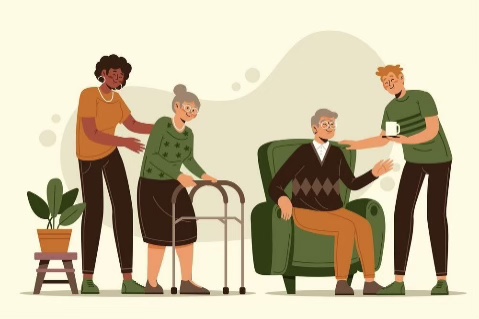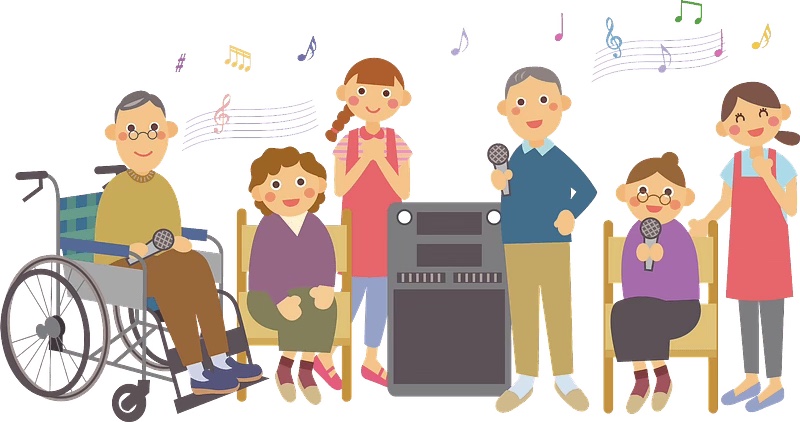Want to improve the dementia wellbeing of your residents?
Spend 5 minutes on the Inspiration Kit for a checklist of simple ideas to incrementally improve your residential home environment.
The Inspiration Kit is to stimulate and give you inspiration and ideas for improvement to your care home. It is not a test, and for some it won’t be relevant for your particular care home, but it can help make the lives of your residents and staff easier if you can include as many of the suggestions as possible.
The kit is in 2 sections:
We hope you enjoy it and find it useful to enhance your offering.
The Inspiration Kit
Section 1: Holistic Care

Focusing on quality of life, emotional, occupational and social needs as well as functional and medical care and, where possible, structuring accommodation in small households.
1. Is your care home homely with home comforts, and personalised bedrooms, fostering a ‘family feel’? This can create a less institutionalised environment which in turn promotes wellbeing and independence.
Which of the following do you have? The more of these you can offer the better.
- House plants
- Soft Furnishings: cushions, throws etc
- Lamps, not lights
- The residents’ own furniture in their room
- Wall art: paintings, pictures, photos, memory wall etc
- The residents’ own mugs
- Radio and TV
- Household space for ‘family living’
- Shared dinner table and chairs for all
- Small households (5 to 6 people)
- Individual bedrooms
- Accessible kitchen
- Own bedding
- The ability to stay in the same bedroom
- The facility for residents and their visitors to have constant independent access to hot and cold drinks
- The facility for residents to have constant access to suitable snacks
- The facility for the residents to have the choice whether to eat alone or communally
- Domestic style toilet roll holders
2. Does your care home have dementia-friendly decor and environment? It is easier for people living with dementia if their surroundings are familiar, safe and easy to understand. Good design can reduce medical intervention from trips and falls, distressed behaviour, wayfinding and loss of independence as well as making it easier for staff.
Which of the following do you have or do?
- Bold bloc-colour (e.g. on walls, carpet, furniture), reserving patterns for smaller items such as cushions etc
- Flooring to contrast with walls and furniture (Handy hint – check with your phone camera on portrait then black and white to see if the difference in the tone of a colour provides sufficient contrast, e.g. the floor should be noticeably lighter or darker than the wall to create a clear visual distinction.)
- Handrails to colour contrast with walls
- Plain matt flooring rather than shiny flooring
- Contrasting light switches
- Contrasting stair nosings to avoid blurring
- Toilet seats in a contrasting colour to the rest of the toilet
- No obvious threshold strips in the flooring
- Uniform lighting (e.g. no dark patches, use task lighting)
- Avoidance of glare using window shades or blinds
- Optimise natural light
- Avoidance of shiny surfaces
- Mirrors placed carefully to avoid disorientation
- Easy signage, using text and image (e.g. image of a toilet), using contrast colour to the wall
- Signs fixed to the doors they refer to and at eye level
- Remove all signage not relevant to residents
- Easy bedroom identification (e.g. coloured doors with personal pictures of photographs)
- Other rooms identification – make the function of each room obvious and the route accessible
- Large faced clocks
- Break up long corridors (e.g. with a chair or picture to talk about)
- Create a destination point for a dead end
- Reduce visual clutter (e.g. messy noticeboards at reception)
- A bright picture or plant or chair as a way-marker (as people with dementia often use landmarks to navigate)
- Reduce unnecessary noise (e.g. dampen noise with fabrics)
3. Does your care home offer compassionate and humane care? Are your residents cared for in the least restrictive environment possible whilst maintaining the appropriate levels of safety and humanity?
Which of the following do you have?
- Frequent 1:1 time and group time with social purpose
- Continuity and longevity of relationships
- Allocated carers with intimate knowledge of the individual’s personal family history, skills, capabilities and interaction styles
- The ability for residents to choose where they go, what they do, and when.
4. Does your care home boost the self-worth of your residents and stimulate their minds? Encouraging purposeful activity improves confidence and increases engagement and well-being.
Which of the following does your care home offer?
- Household task involvement such as cooking and laundry
- Regular exercise or activity
- Talks
- National calendar events
- Hobbies
- Communal spaces and quiet private spaces giving the residents the chance to be alone or with others
- Books and games
- Opportunities to reminisce (e.g. old music, films etc)
- Facility for playing musical instruments
5. Is your care home non-institutionalised and dignified? The removal of certain features can make a home feel less institutionalised. For example, too many obvious safety measures can make it look more institutionalised.
Which of the following does your care home have or do?
- Avoid locked doors and inaccessible areas to reduce frustration where appropriate and where safety allows
- Disguise access to staff-only areas (e.g. painting staff doors the same colour as the walls)
- Obscure barrier fences (e.g. planting in front of fences)
- Barrier-free access to outside to encourage independence
- Involvement in daily tasks to reduce apathy and feelings of uselessness
- Maintain a domestic scale (e.g. domestic style dining rooms)
- Indoor plants or a view to outside green
- Observance of the seasons
- Stylish bathrooms (e.g. instead of a plastic fold down chair have a built-in bench with cork seat
- Staff in their own clothes
6. Is your garden dementia friendly? This can encourage residents to enjoy the health and wellbeing benefits of independent exercise, activity and interaction with friends and family as well as providing stimulation or calm where needed.
Which of the following does your care home have?
- An independently accessible outdoor space for people to get fresh air
- A walkway that is smooth and unobstructed
- A simple and knowable layout
- An area for activity (e.g. a greenhouse or planting area for gardening or just putting the washing out)
- An area for calm (e.g. a quiet sitting space)
- A sheltered area so that the garden can be enjoyed in all weathers
- Year-round interest which announces the seasons (e.g. bulbs, fragrant summer flowers, deciduous trees)
- Interest (e.g. a bird feeder, a reminiscence feature such as a letter box, varied textured planting)
- Plenty of seating
- Sensory planting (e.g. grasses that move in the wind, flowers with strong fragrance)
- Disguise any dead ends with a destination feature (e.g. two seats together or a statue)
Section 2: Connected to the Community

Without constant reminders of who they are and how they fit into their community a person living with dementia can lose their sense of identity. Frequent interaction with friends, family and community can help maintain that identity and also spread the idea of a dementia friendly society.
7. Does your care home involve the local community and maintain links with the outside?
Which of the following do you have?
- Community employment with any of the following on your site: cafe, hairdressers, shop, library, laundrette
- A gardening club with visiting gardeners
- Therapy pet visits
- Bridges to connect the home with the community e.g coffee shop
- Coffee mornings
- Community noticeboards
- Photographs of local scenes on the walls
- Private space for quiet or intimate conversations
8. Does your care home raise dementia awareness?
Which of the following does your care home do or have?
- Friends and family welcomed
- Group sessions and hobbies, eg bridge, U3A, reminiscence sessions
- Leaflet drops
- Music / drama events (e.g. local school children, choirs)
- Reach out to local shops and businesses to encourage them to be dementia friendly and understand the needs of someone living with dementia
- Encourage the involvement of local school children and students to increase their understanding of dementia
- Record memories through different media
The Inspiration Kit also comes as a downloadable pdf version to print. This version has check boxes for you to fill in by hand. Please click here for the pdf version.
Or there is an online version of the Inspiration Kit, which you can fill in online, and when you’ve completed it we will email you a copy of your answers so that you can consider where you might be able to improve. Please click here for the online version.
With either form, please complete each section as far as you are able. This can be done by one person or several members of staff, and residents as well if you like, to get different perspectives.

